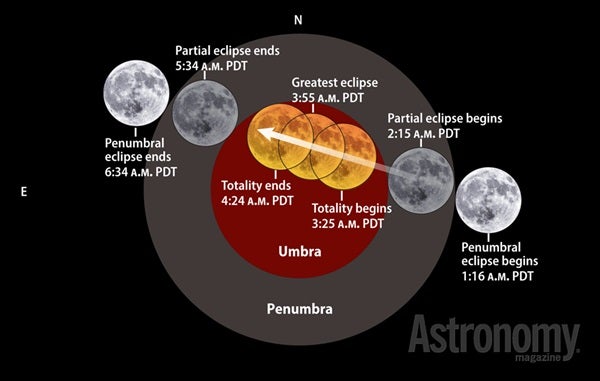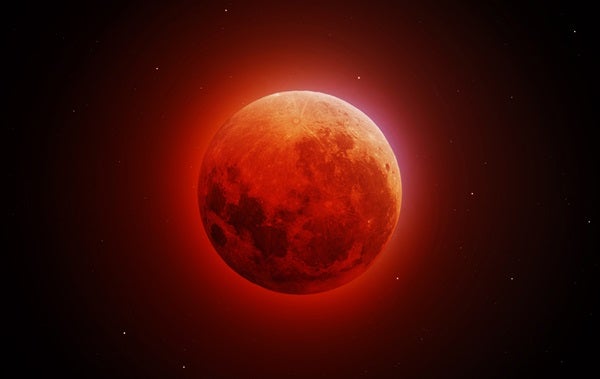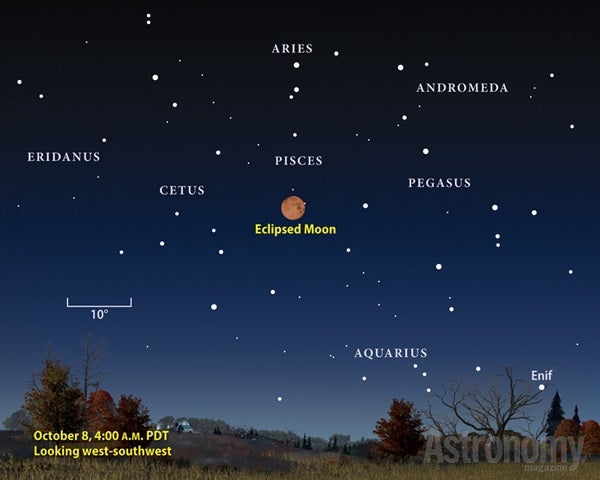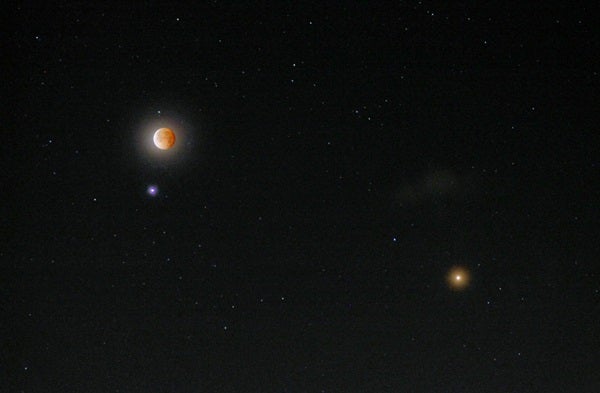The first significant change to our satellite’s appearance comes when it enters the dark inner part of the shadow, known as the umbra. This occurs at 5:15 a.m. EDT (2:15 a.m. PDT) and marks the beginning of the eclipse’s partial phase. Within a few minutes, you’ll notice a small bite taken out of Luna’s western limb.
That starts to change as totality approaches. Once the Moon completely enters the umbra at 6:25 a.m. EDT (3:25 a.m. PDT), no direct sunlight reaches the surface. Still, our orbiting companion remains visible thanks to Earth’s atmosphere. Our blanket of air bends sunlight so that it partially fills the shadow. Red light, by virtue of its longer wavelength, passes through air more easily than shorter-wavelength blue light, which gets scattered out. This gives the Moon a reddish cast during totality — and also explains the ruddy colors of sunrise and sunset.
While nearly everyone in North America can witness the beginning of totality, along the East Coast, the Moon sets and the Sun rises by the time totality ends at 7:24 a.m. EDT (4:24 a.m. PDT). The eclipse’s partial phases then play out in reverse as our satellite leaves the shadow. It exits the umbra at 5:34 a.m. PDT (visible from the Great Plains westward) and the penumbra at 6:34 a.m. PDT.
Throughout this eclipse, the Moon resides among the dim background stars of southern Pisces the Fish. Although the autumn constellations don’t have a lot of pizzazz under the glare of a Full Moon, the starry backdrop will grow more prominent once totality reigns. The easiest group to spot will be the Great Square of Pegasus, which lies some 15° northeast of the eclipsed Moon.
An even more impressive sight stands about 1° south of our darkened satellite. You’ll need binoculars or a telescope to spot Uranus, which glows at magnitude 5.7 and is less than a day removed from opposition and peak visibility. The two objects appear closer to each other the farther north you live, and from northeastern Asia, the Moon actually passes in front of Uranus during the eclipse.
- Video: Easy-to-Find Objects in the 2014 Autumn Sky, with Richard Talcott, senior editor
- Video: How to Observe a Lunar Eclipse, with Michael E. Bakich, senior editor
- StarDome: Locate the Moon in your night sky with our interactive star chart.
- The Sky this Week: Get your Moon observing info from a daily digest of celestial events coming soon to a sky near you.
- Sign up for our free weekly email newsletter.















